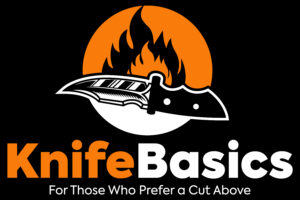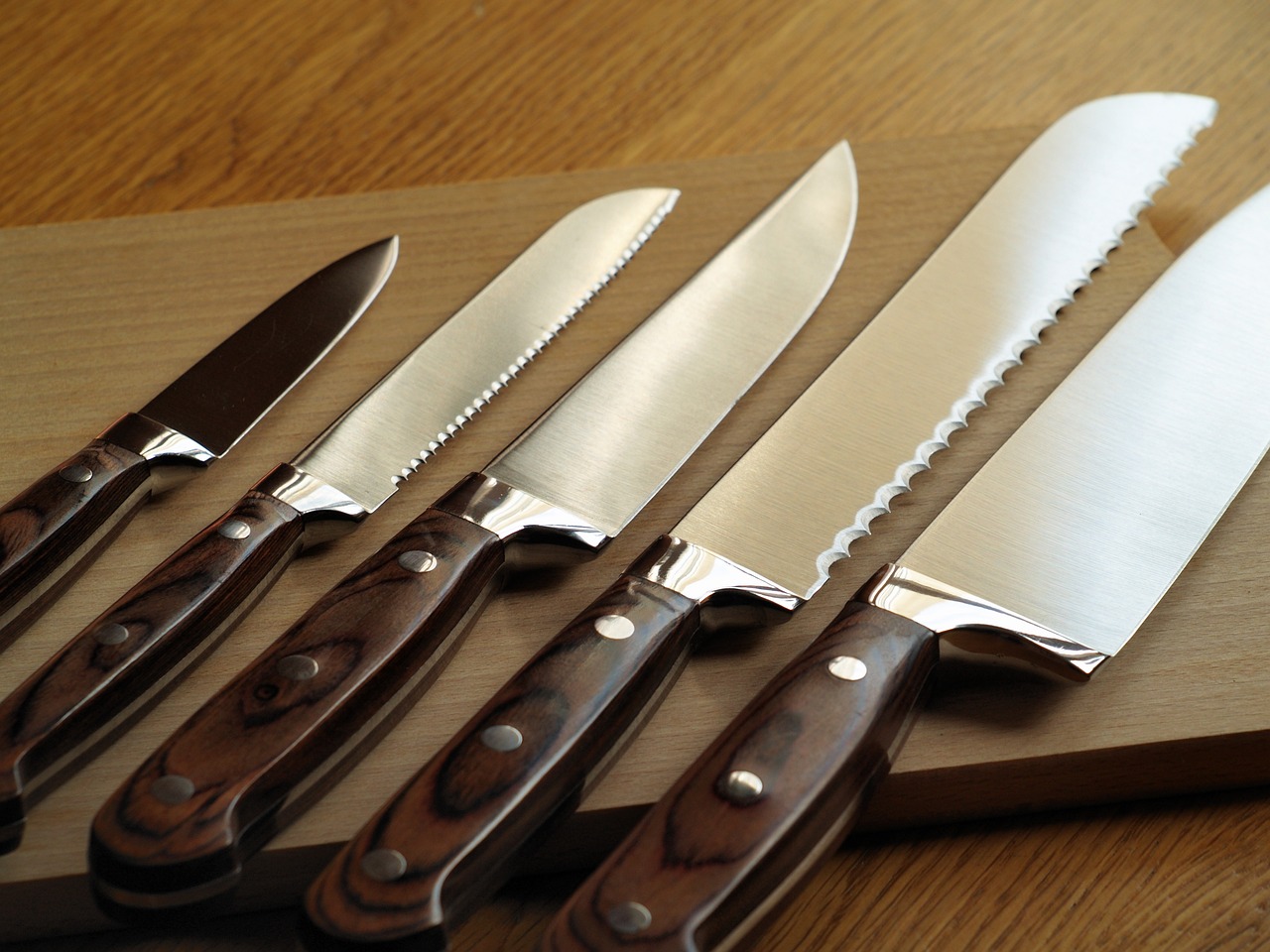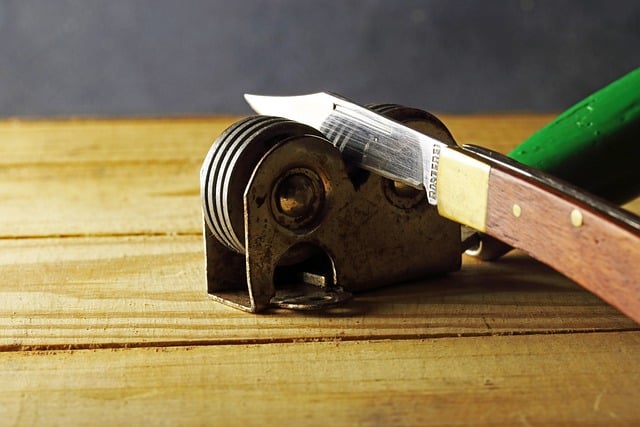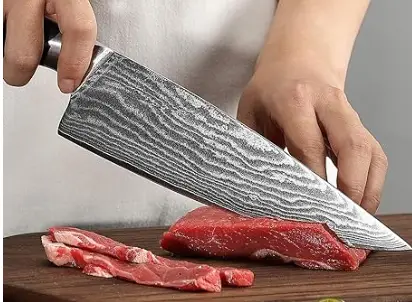Welcome to the ultimate guide to the best knife blades, where we’ll sharpen your culinary skills and elevate your cooking experience to a whole new level. Whether you’re a professional chef or a home cook, the quality of your knife’s blade can make all the difference in the kitchen. With a sharp and reliable blade, your ingredients will come together effortlessly, allowing you to create masterpieces with precision and finesse.
In this guide, we’ll explore the world of knife blades, covering everything from the different types of steel used to the various blade shapes and designs. We’ll dive deep into the science behind blade materials, discussing their strengths and weaknesses, so you can make an informed decision when it comes to choosing the perfect knife for your needs.
You’ll also discover valuable tips and techniques for sharpening and maintaining your blades, ensuring they stay in top condition for years to come. From honing to whetstone sharpening, we’ve got you covered. Get ready to take your culinary skills to new heights with the best knife blades on the market. Let’s dive in!
Different Types of Knife Blades
When it comes to knife blades, there are a variety of options to choose from. Each type of blade has its own unique characteristics that make it suitable for different tasks in the kitchen. Let’s explore some of the most popular types of knife blades:
1. Chef’s Knife Blade: The chef’s knife is the workhorse of the kitchen, and its blade is versatile and multi-purpose. It is typically between 6 and 12 inches long with a curved edge and a pointed tip. This type of blade is ideal for slicing, dicing, and chopping a wide range of ingredients.
2. Serrated Knife Blade: Serrated blades have a row of teeth along the cutting edge, which enables them to easily slice through bread, tomatoes, and other foods with tough exteriors and soft interiors. The saw-like action of the serrated edge helps to prevent squishing and tearing.
3. Paring Knife Blade: Paring knives have short, narrow blades that are perfect for intricate tasks, such as peeling fruits and vegetables, trimming, and creating decorative garnishes. The small size of the blade allows for precise control and maneuverability.
4. Boning Knife Blade: Boning knives have thin, flexible blades that are specifically designed for removing bones from meat, fish, and poultry. The narrow and sharp edge allows for precise cuts, ensuring that you can separate the meat from the bone with ease.
5. Utility Knife Blade: Utility knives are smaller versions of chef’s knives, typically ranging from 4 to 6 inches in length. They are a versatile option for a wide range of tasks, such as slicing sandwiches, cutting small fruits and vegetables, and trimming meat.
Understanding the different types of knife blades will help you determine which ones are essential for your culinary needs. Whether you’re a professional chef or a home cook, having a well-rounded collection of blades will enable you to tackle any recipe that comes your way.
Choosing the Right Knife Blade for Your Needs
Now that you’re familiar with the different types of knife blades available, it’s time to choose the right blade for your needs. Here are a few factors to consider when making your decision:
1. Blade Material: The type of steel used in the blade will greatly impact its performance and durability. Stainless steel, high-carbon stainless steel, and carbon steel are some common materials used in knife blades. Each material has its own unique properties, so it’s important to understand their strengths and weaknesses.
2. Blade Shape: The shape of the blade determines its intended use and functionality. From the curved blade of a chef’s knife to the narrow and flexible blade of a boning knife, each shape is designed for specific tasks. Consider the types of cooking you do most frequently and choose blades that will excel in those areas.
3. Handle Comfort: The handle of a knife should be comfortable and ergonomic, allowing for a secure grip and reducing the risk of accidents. Consider the size and shape of the handle, as well as the material it’s made from. A well-designed handle can make a significant difference in your overall cooking experience.
4. Budget: Knife blades come in a wide range of prices, so it’s important to set a budget before you start shopping. While it’s tempting to go for the cheapest option, investing in high-quality blades will pay off in the long run. Consider your budget and prioritize quality and performance over price.
By taking these factors into consideration, you can ensure that you choose the right knife blade for your specific needs. Remember, the perfect blade is the one that feels comfortable in your hand and allows you to effortlessly achieve your culinary goals.
Understanding Blade Materials and Their Properties
The material used in a knife blade plays a crucial role in its performance, durability, and maintenance requirements. Let’s take a closer look at some of the most common blade materials and their properties:
1. Stainless Steel: Stainless steel is a popular choice for knife blades due to its corrosion resistance and ease of maintenance. It is an alloy of iron, carbon, and chromium, which gives it its stainless properties. Stainless steel blades are generally more affordable and require less maintenance than other types of blades. However, they may not hold an edge as well as blades made from other materials.
2. High-Carbon Stainless Steel: High-carbon stainless steel is a premium blade material that combines the best of both worlds. It offers the corrosion resistance of stainless steel with the strength and edge retention of high-carbon steel. High-carbon stainless steel blades are known for their excellent sharpness and durability, making them a top choice for professional chefs.
3. Carbon Steel: Carbon steel blades are renowned for their exceptional sharpness and edge retention. They are made from iron and carbon, and they require regular maintenance to prevent rusting. Carbon steel blades are favored by many professional chefs for their ability to achieve razor-sharp edges and maintain them over time.
4. Ceramic: Ceramic blades are made from zirconium oxide, a material that is extremely hard and resistant to wear. These blades are incredibly sharp and retain their edge for a long time. However, they are also more brittle than other blade materials and can chip or break if not handled with care.
Each blade material has its own set of advantages and disadvantages, so it’s important to consider your specific needs and preferences when choosing the right material for your knife blades. Whether you prioritize ease of maintenance, sharpness, or durability, there is a blade material out there that will suit your requirements.
Sharpening and Maintaining Knife Blades
A sharp knife blade is essential for efficient and precise cutting in the kitchen. Over time, even the best blades will become dull and require sharpening. Here are some valuable tips and techniques for sharpening and maintaining your knife blades:
1. Honing: Honing is the process of realigning the blade’s edge, rather than actually sharpening it. This can be done using a honing steel, which is a rod made of steel or ceramic. By running the blade along the honing steel at the correct angle, you can straighten the edge and restore its sharpness. Regular honing helps to maintain the blade’s edge between sharpenings.
2. Whetstone Sharpening: Whetstone sharpening, also known as water stone sharpening, is the process of actually removing material from the blade to create a new, sharp edge. It involves using a whetstone, which is a stone block with different levels of grit. By running the blade along the whetstone at the correct angle and applying consistent pressure, you can gradually sharpen the blade to your desired level of sharpness.
3. Sharpening Systems: If you’re new to sharpening or prefer a more foolproof method, sharpening systems can be a great option. These systems typically consist of a guided rod or a set of stones that are fixed at a specific angle. By following the instructions provided, you can easily sharpen your blades to a professional level without the risk of mistakes.
4. Regular Maintenance: In addition to sharpening, regular maintenance is crucial for keeping your knife blades in top condition. This includes cleaning and drying them properly after each use, storing them in a knife block or sheath to protect the edge, and avoiding cutting on hard surfaces that can damage the blade.
By incorporating these sharpening and maintenance techniques into your routine, you can ensure that your knife blades remain sharp, reliable, and safe to use for a long time.
Honing vs. Sharpening: What’s the Difference?
Honing and sharpening are two terms that are often used interchangeably, but they actually refer to different processes. Understanding the difference between honing and sharpening is essential for properly maintaining your knife blades.
Honing: As mentioned earlier, honing is the process of realigning the blade’s edge by running it along a honing steel. This process helps to straighten the edge and restore its sharpness. Honing is a quick and easy way to maintain the blade’s edge between sharpenings.
Sharpening: Sharpening, on the other hand, involves actually removing material from the blade to create a new, sharp edge. This process is typically done using a whetstone or a sharpening system. Sharpening is necessary when the blade becomes dull and honing is no longer sufficient to restore its sharpness.
Knowing when to hone and when to sharpen your knife blades is essential for keeping them in optimal condition. Regular honing can help maintain the edge, while sharpening should be done when the blade has become noticeably dull.
Common Knife Blade Terminology
When exploring the world of knife blades, you may come across various terminology that can be confusing. Here are some common knife blade terms you should be familiar with:
1. Tang: The tang refers to the portion of the blade that extends into the handle. A full tang extends the entire length of the handle, providing stability and balance. Partial tangs are shorter and may be less durable.
2. Bolster: The bolster is the thickened area between the blade and the handle. It adds weight and balance to the knife and provides a smooth transition between the blade and the handle.
3. Edge: The edge is the sharpened cutting surface of the blade. It can be straight, serrated, or a combination of both, depending on the knife’s intended use.
4. Spine: The spine is the non-cutting edge of the blade, opposite the edge. It is typically thicker than the edge and provides stability and strength to the blade.
5. Bevel: The bevel is the angle or slope at which the blade is sharpened. A smaller bevel angle results in a sharper edge, but it may also be more prone to dulling or chipping.
Understanding these basic knife blade terms will help you navigate the world of knives with confidence and make informed decisions when purchasing new blades.
Recommended Knife Blade Brands and Models
With so many knife blade brands and models on the market, it can be overwhelming to choose the right one. Here are some highly recommended knife blade brands and models that have stood the test of time:
1. Wusthof: Wusthof is a renowned German brand known for producing high-quality, durable knife blades. Their Classic and Classic Ikon series are popular choices among professional chefs and home cooks alike.
2. Shun: Shun is a Japanese brand that combines traditional craftsmanship with modern techniques. Their blades are known for their exceptional sharpness and unique designs. The Shun Classic and Premier series are highly regarded for their performance and beauty.
3. Victorinox: Victorinox is a Swiss brand that is famous for its Swiss Army knives. They also produce excellent kitchen knives that offer great value for money. The Victorinox Fibrox Pro series is a favorite among professional chefs for its comfort, durability, and affordability.
4. Global: Global is a Japanese brand that is known for its sleek and modern designs. Their knives are made from high-quality stainless steel and feature a unique handle construction that provides a comfortable and secure grip.
These are just a few examples of reputable knife blade brands, but there are many other great options available. When choosing a brand and model, consider your specific needs, preferences, and budget to find the perfect blade for you.
Knife Blade Care and Safety Tips
Proper care and handling of your knife blades are essential for their longevity and your safety. Here are some important care and safety tips to keep in mind:
1. Hand Washing: Always hand wash your knife blades with warm, soapy water immediately after use. Avoid putting them in the dishwasher, as the high heat and harsh detergents can damage the blade and handle.
2. Drying: Thoroughly dry your knife blades with a clean towel before storing them. Moisture can lead to rust and corrosion, so it’s important to remove any moisture to keep the blades in top condition.
3. Storage: Store your knife blades in a knife block, on a magnetic strip, or in a blade guard or sheath to protect the edge and prevent accidents. Avoid storing them loose in a drawer, as they can become damaged and pose a safety risk.
4. Safe Handling: Always handle your knife blades with care and respect. Hold the handle firmly and keep your fingers away from the blade while cutting. Use a cutting board that provides a stable surface and won’t dull the blade.
5. Sharpening and Maintenance: Regularly sharpen and maintain your knife blades to ensure optimal performance. Follow the recommended sharpening techniques for your specific blades and always use the correct angle and pressure.
By following these care and safety tips, you can prolong the life of your knife blades and prevent accidents in the kitchen. Remember, a sharp blade is a safe blade when used properly.
- 【Exclusive Built-in Sharpener】Kitchen knife set with sharpener is amazing. The self-sharpening block keeps the knives razor sharp effectively. It saves you from having to honing blades on a sharpening steel.
- 【Premium Knife Set】Made of forged, high-carbon one-piece German stainless steel, this cutlery knife block set is tarnish-resistant and rust-resistant. The knife set is well-made with a nice appearance. They are sharp, durable, and have good weight and balance, providing effortless cutting. Perfect for both professional chefs and beginner.
- 【Easy to Clean Up】: The kitchen knife set with block is easy and fast to clean. Hand-wash for best results. The blades are stainless and rust-free after going through washing.
- 【Easy to Store】: All knives are stored safely in the knife block with built-in sharpener for space efficient storage. The block is easy to clean and maintain. It is durable and doesn't take up too much space on the counter. Made of natural rubberwood,this wooden kitchen knife block is strong and sturdy to hold heavy knife sets and is finished with a beautiful veneer that’s naturally resistant to grime and easy to wipe clean
- 【Best Sharp Knife Set】Optimized weight and good balance make this kitchen knife set fit nicely in the palm of hand. Exclusive taper grind edge technology provides optimum sharpness for precise cutting and is easy to re-sharpen. The knives are sturdy and can handle heavy chopping. The knives set stays sharp even after extended use.
- ULTRA-SHARP BLADES: Superior professional-level sharpness that ensures precision cutting.
- THE LAST KNIFE YOU’LL EVER NEED TO BUY: German Engineered Knife Informed by over 100 Years of Mastery. HENCKELS knives are built to last.
- EFFORTLESS CUTTING: Enjoy easy cutting with minimal effort with this lightweight, easy-to-use knife.
- SET INCLUDES: 3-inch paring knife, 5-inch serrated utility knife, 7-inch santoku knife hollow edge, 8-inch chef's knife, 8-inch bread knife, 4.5-inch steak knife set of 6, professional honing steel, kitchen shears, and hardwood knife block
- QUICK CLEAN UP: No-fuss cleanup, in the dishwasher or by hand. Stain and rust-free blades.
- 【Versatile Tasks Butcher Knife Set】Butcher knife set includes: 6" bone chopper knife,6" meat cleaver knife, 5.9" viking knife, 5.5" cleaver knife, 6" fillet knife, 6" dividing knife, 5" paring knife and knife bag. Suitable to handle a variety of tasks such as slicing, chopping, dicing, mincing and cutting tough vegetables, meats, bone, fish, they are suitable for BBQ, hiking and camping.
- 【High-end Stainless Steel】Each knife of this kitchen knife set is constructed from premium high carbon stainless steel, the blade is forged using a stonewashed and hammer finish treatment, 58+2 high hardness, wear-resistant, and non-sticking. High quality material which makes its blade more solid and sharper for precise and efficient cutting and gives you a better usage experience.
- 【Masterful Forged Craftsmanship】Razor-sharp and powerful are the characteristics of the butcher knife, bringing the edge to a razor-sharp 16° degrees per side V-shaped cutting edge to achieve the best balance of hardness, durability, rust resistance and sharpness, maximum cutting performance.
- 【Ergonomic Comfortable Wood Handle】Butcher chef knives with ergonomic walnut wood handle, which is well-balanced and durable, full tang design with three rivets and a seamless transition from blade to handle retain the utmost comfort and safety, ensures optimal stability and balance that helps reduce hand fatigue.
- 【Portable Kitchen Knife Set】All knives can be neatly organized in a durable and portable bag, making them easy to carry for outdoor camping, hiking, and cooking. HOSHANHO butcher knife set is a great gift choice for occasions such as Thanksgiving, Christmas, Halloween, weddings, birthdays, housewarming, and anniversaries.
Conclusion: Enhance Your Culinary Skills with the Right Knife Blade
Congratulations! You’ve reached the end of the ultimate guide to the best knife blades. Armed with the knowledge of different types of knife blades, how to choose the right one, the science behind blade materials, and valuable tips for sharpening and maintenance, you are well on your way to enhancing your culinary skills.
Investing in high-quality knife blades and taking proper care of them will not only improve your cooking experience but also elevate the quality of your dishes. Remember to choose blades that suit your specific needs, maintain them regularly, and handle them with care.
So go ahead, sharpen away.






